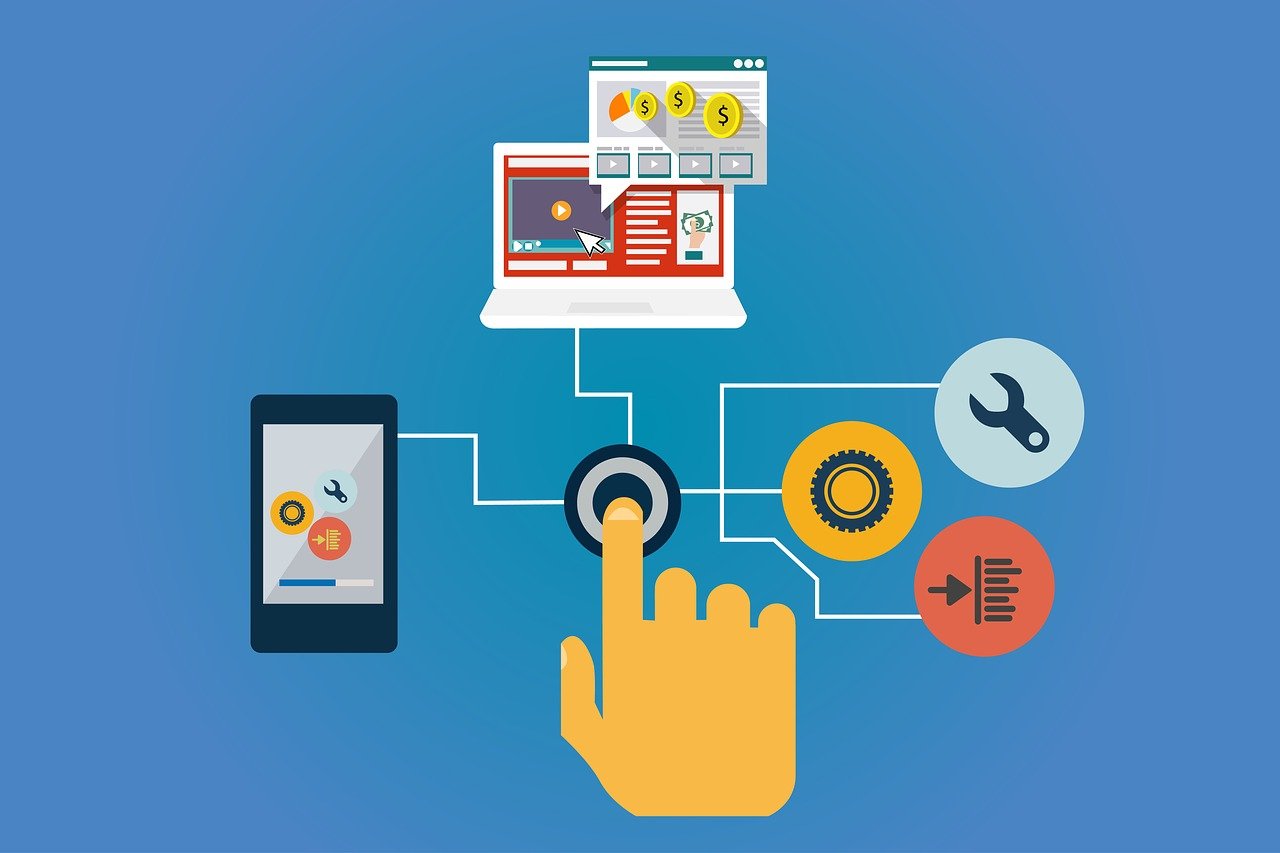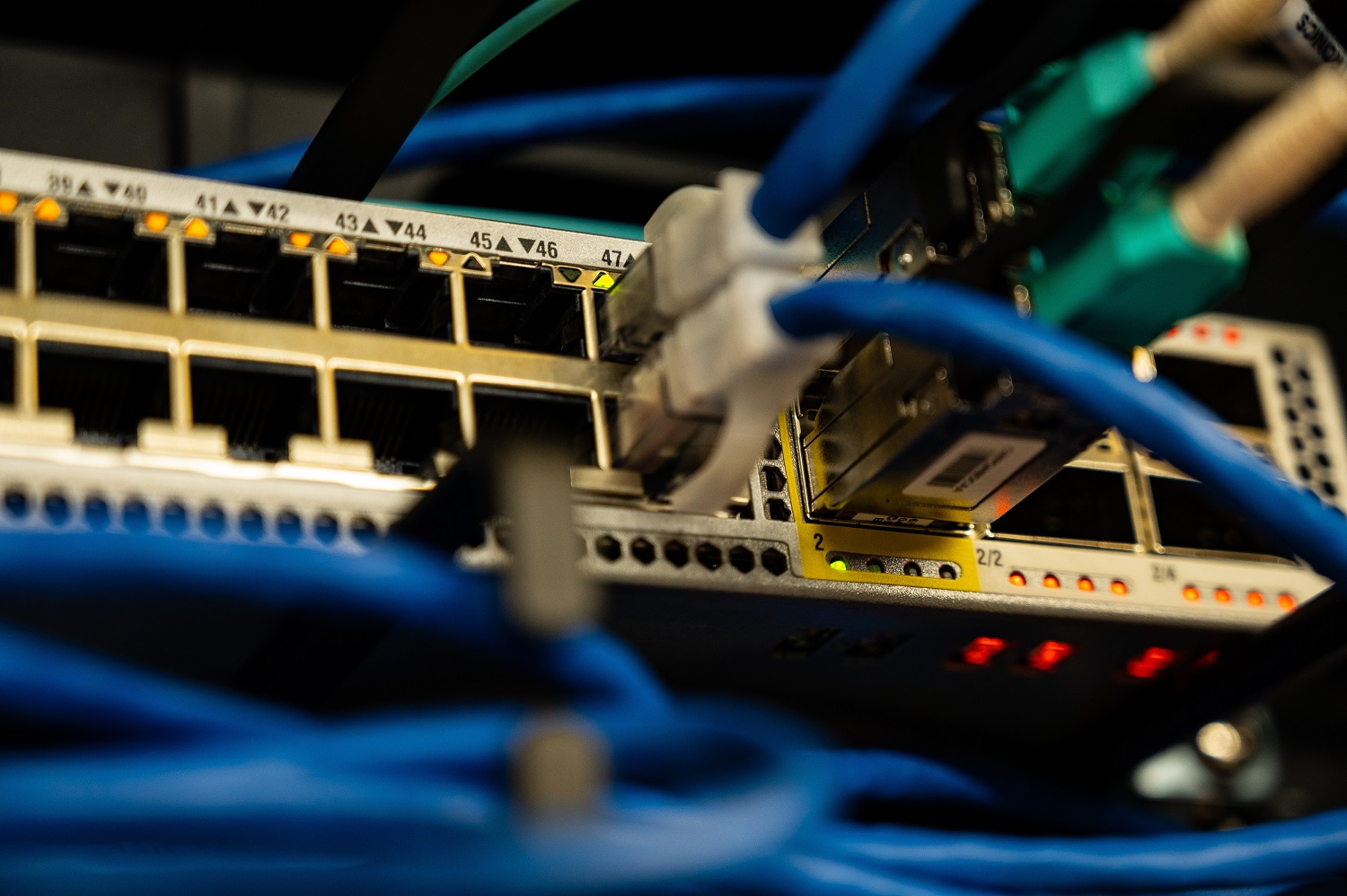Businesses are familiar with “Managed Services” which is a vague term to cover plenty of things. This term becomes more comprehensive in the context of information technology. Managed IT services can be explained as a practice of outsourcing different technological services to MSP (Managed Services Provider).
The MSP has to offer proactive management for technological systems and to implement strategies. These strategies may streamline and improve operations and decrease costs. MSPs are responsible for focusing on security failures and network prevention while providing constant systems monitoring.
Managed IT Services may include management of essential technologies, including data and telephony centers, core network and data center. Nowadays, there can’t be a simple solution for every business. Businesses find it easy to outsource to MSPs for their IT needs, such as security.
What is MSP?
MSP means a managed service provider, and it is a business that remotely manages and owns service or technology and allows the use of this service or technology to any client through subscriptions. If you want to learn about managed services, we at Bleuwire have created this guide. It can be helpful for you.
It explains possible solutions available in the market along with pricing models. After reading this guide, you will be able to make educated decisions on managed services.
Managed Services Types
Managed IT services can be distributed into different categories. See these types to understand the nature of these services.
DaaS (Desktops as a Service)
With DaaS, a 3rd party is responsible for hosting the VDI’s back end (Virtual Desktop Infrastructure). As you log in to DaaS, the whole operating system may run from the virtual cloud infrastructure of MSP. A computer software tool may prove helpful to access DaaS.
Fortunately, DaaS is convenient to access, but the extra security is available with VDI ads. If you are working with sensitive data, DaaS may be a good solution for you. Companies can bring their device policies and have several telecommuters.
Backup as a Service Centers
Backup as service centers offer recovery and backups. They can help you to manage backups and duplicate data of your infrastructure. The service provider will secure this data on off-site servers. The frequency of these backups may depend on your recovery plan.
A DRP (disaster recovery plan) or recovery plan may layout necessary procedures if a digital atmosphere turns down. You can set particular expectations for MSPs. Remember, recovery plans may revolve around RTO (recovery time objections) and RPO (recovery point objections.
The RTO is a simple concept, such as the speed of system recovery after a disaster. Remember, RPO can be more complicated than RTO. An RPO reflects the age of files you may want to restore. Your provider will tell how frequently they run off backups for RPO. For instance, if you’re going to restore files after an hour, your MSP must run backups almost every hour. Frequent backups may ensure data security. It can protect your recent work even after a worse incident.
Data Analytics
A service provider can capture, analyze, and monitor network data with this analysis. It proves helpful for clients to implement effective solutions for businesses. Proposed solutions may lead to a change in process and an increase in profit.
Communication Management
Unified or managed communications include chat, video, voice and email. These things are combined in a service. In this way, employees can connect to a platform instead of logging into different applications. Managed packages of communication include:
- Administrative portals
- Calendar sharing
- Spaces or virtual rooms
- File sharing
- Video conferencing
- Hosted phones
- Instant messaging
Managed communications may streamline the engagement of employees and increase convenience in telecommunication.
Security as a Service (SaaS)
SaaS (Security as a Service) is a cyber-security outsourcing model. Several SaaS solution may be deployed through the cloud, but several providers will install a hardware component in the environment of the company. A minimum SaaS package may include:
- Remediation, testing, and system monitoring
- Analysis and log management
- Security reporting
- Verification of patch installation
- Anti-malware (protection from cyber-attacks, malware, and viruses)
- Infrastructure and Networking
Infrastructure and networking may address different things. Some service providers may maintain virtual servers, conduct backups and maintenance off-site.
Others may maintain and host servers in their data centers or may rent spaces on their servers.
The selection of an option may depend on the size of your company and the amount of data you want to store. Hosting and purchasing your services can be an expensive option. Remember, you have to replace hardware almost every five years.
Software as a Service
In this service, the managed service providers may distribute applications through a cloud and act as a go-between for the software developer and the company. Occasionally, you may directly go through software developers, but MSP may give you a guarantee for new updates without extra cost.
Moreover, MSP helps you to get the advantage of personalized customer services. You can understand this difference as purchasing groceries from a supermarket and ordering directly from a wholesaler.
Managed Packages
These are full-service solutions to work as in-house IT teams. Remember, these packages are combined with several solutions for managed services. They must involve full support, monitoring, backup and security services.
Support Services
These services cover troubleshooting needs and helpdesk. They are popular services available on the market. With special support services, MSPs can manage regular problems, such as software updates and password resets. Numerous support services may cover tablets, printers, and mobile devices. Some people may offer on-site solutions if necessary.
What are the most commonly used services?
The management and remote monitoring of servers, mobile devices and desktops are a common type of services. Remote management and control is a foundational and primary service to manage service providers. Numerous managed IT services providers offer special services. They often face heavy pressure and competition on revenue margins.
Remember, commoditization of fundamental managed services has forced service providers to distinguish their offerings. A famous direction can be managed security services. Clients frequently demand assistance in IT security from their managed service providers.
Subsequently, service providers are focusing on developing security management services practices. They may partner with different security vendors for cybersecurity services. With cloud computing, managed IT services are evolved for the integration of cloud services.
Managed IT services providers may concentrate on IaaS (infrastructure as a service) to provide managed cloud services along with cloud providers. Some famous examples are Microsoft, Google, AWS (Amazon Web Services).
Service providers can market managed PaaS (platform as a service) partner with or offering SaaS (software as a service) vendors, including Salesforce of CRM Space. For the service management market, there is a Service Now.
In numerous cases, a managed IT services provider may seek differentiation in the arena of communications. Some examples include managed telephony IP services where a service provider is accountable for voice services in customer accounts.
Contracts of Managed IT Services
A master agreement is necessary to set essential terms and conditions. Service providers work with customers under these agreements. Moreover, SLA (service-level agreement) is another vital document for managed IT service providers.
This document will identify specific services provided by a service provider and how to measure the success of service delivery. In numerous cases, SLA becomes an integral part of a master services contract.
Pricing of Managed IT Services
In numerous cases, a service provider may charge for managed IT services in different methods. For instance, all-inclusive pricing, per-user, and per-device are some usual pricing models. A remote management and monitoring service may prefer a per-device billing method.
Sometimes, service providers charge a flat price for every device for its management. Service providers can adjust the pricing of their services on a per-user basis if customers use different devices, such as smartphones, tablets and laptops.
In an all-inclusive pricing model, they adjust a flat fee for every IT service delivery to their clients. Managed IT service providers may follow a schedule for billing along with a monthly fee. A flat-fee can make it easy to predict pricing and offer a stable stream of revenue each month to service providers.
Channel partners are dependent on hourly billing rates. They may face a perplexing transition at the commencement of their services for monthly billing (flat fee). Remember, aspiring service providers may make stepwise progress toward their pricing model. They focus on the cultivation of repeatable and predictable procedures.
Monetary Advantages of Managed IT Services
Managed IT Services act as an essential investment for your business. You will get their return along with several benefits. With the help of managed IT services, businesses can achieve different corporate initiatives. These services help organizations to ensure the allocation of the right resources and the right people.
Increase the Productivity of Users
IT directors and business owners always look to improve their revenue and productivity. Switching to this system will help you to decrease infrastructure costs in different ways. With the help of a managed IT provider, you can downsize the infrastructure of your company.
Moreover, you can increase savings from consulting, training and licensing. These services may help you to save money and streamline everything in a better way.
Great for IT Staff
This advantage is directly related to the productivity of staff members in the IT department. Remember, IT staff is responsible for resolving issues of users and fixing malfunctioning equipment. These activities may divert their focus from core errands.
By outsourcing the management of the IT environment to managed IT services providers, you can increase the productivity and focus of your IT staff.
Small Investment
With the help of managed IT services, you can offset initial technology costs. Instead of spending thousands on software and hardware upfront, feel free to pay for these services through monthly investment. These are operational expenses instead of capital.
Moreover, you will get updates for new software without paying extra money. As a result, it is an efficient method to avoid additional charges on keeping your technology updated.
Monthly Predictable Costs
With managed IT services, you will pay a monthly amount. It will save you from sudden shocks, and you can save the right amount of money. As a result, budgeting will be easy for you. These services may increase your flexibility to invest in other business areas while keeping an eye on essential costs.
Get Expert-level Support
Every business owner understands the value of time. IT issues can disrupt productivity and stop projects. Without managed IT services, you have to spend your precious time and money to solve these issues. Fortunately, you can avoid all these hassles with the help of Managed IT services. You will instantly access experts to resolve your concerns.
Easily Scale Your Business
With the growth of your business, you will need an expansion in its structure too. If you are using managed IT services, you can easily scale up your business. They can support 10, 15, 50 or even more employees. These services can increase your flexibility and enable you to contract or expand your business based on its needs.
In short, Managed IT Services will help you to increase the overall productivity of your business by creating a scalable, well-supported, and reliable IT environment. It can, directly and indirectly, increase the revenue of your business. Regardless of the size of your business, you will need to manage IT services.
Alternatives to Managed Services
To handle the IT needs of your business in the best way, you will need to Managed IT services. Before moving forward, it is necessary to learn about the alternatives to these services. These are two popular substitutes:
In-House IT: Engaging a designated person or staff in your company to manage all technology needs.
Break-Fix Model: Calling in an IT professional to solve a problem or upgrade a system.
Both of these alternatives are entirely different from each other. Break-fix is a dismissed and replaced model by Managed IT services. Moreover, in-house IT can work with Managed Services.
How to choose the best Managed IT Services?
Managed information technology or MSP (managed service provider) contains a team of specialists who are responsible for dealing with hardware, network, and software maintenance. These firms offer different services, but their capabilities may be different.
For this reason, you have to consider some essential factors to find the best service provider. To make things easy, here are some crucial factors to consider:
Cost of Services
After hiring a provider, you will get a flexible budget structure for your company. You will be able to determine your money expenses. Cost may contain different types of pricing models. You have to consider one of them as per your convenience.
- Pay Per Device: These companies charge customers according to the number of devices they support.
- Altering and Monitoring: Service providers may send regular alerts for software to IT specialists of the company to handle.
- Pay Per User: It will include the cost for each user.
If you want an economic model, feel free to consider pay per user model. Before selecting a service provider, you have to check their pricing models and other policies.
Excellent Communication Skills
For a successful business partnership, you have to pay attention to their communication skills. Efficient communication is always necessary. The MSP (managed service provider) should always monitor your network devices and system. They are responsible for educating you and your employees on different services, technologies and best services.
Understanding of Industry
You can’t work with someone lacking expertise and knowledge of the field. It may result in gaps between expected services and service delivery. They must have sufficient knowledge of different aspects of business entity, such as standard requirements and industry compliance.
A managed service provider should have the ability to make relevant recommendations on the output and input of the company besides hardware and software.
Technological Team Designation
Managed IT service providers must have qualified staff members to assist in the maintenance of the current structure. They must have suitable technology to assist in the growth of the business. Staff providers must have the ability to offer updated IT solutions.
Trust and Local Presence
The selection of a particular provider is different than hiring internal employees. It is essential to ask different questions at the time of hiring. You will need a trustworthy service provider to manage essential services.
You should ask how long they may take to fix a broken system. It will help you to evaluate the efficiency and quality of services. Moreover, local presence involves physical availability. A service provider must have a local presence to increase a sense of trust and security.
Moreover, you have to hire a service provider with an impressive track record in terms of performance. It is necessary for a successful and beneficial partnership. They must be able to provide the best services at an affordable price.
Why is the selection of the right MSP necessary?
The selection of the right MSP is always necessary for the overall success of your company. These people are essential to support your mission, operations, and people. After making the wrong choice, you will see its negative impacts on the performance of your organization.
Remember, MSP is a competitive industry, and you will get different types of service providers. It may be tempting to choose cheap service providers, but you can’t compromise over quality. Always select a versatile MSP with a vast range of services.
An ideal service provider must offer a diverse service portfolio containing cybersecurity, cloud solutions, managed IT, conferencing/telephony, consulting/technology strategy and hosting/web development.
Tips to Implement Managed IT Services
If you want a successful engagement of managed IT services, you have to define desired outcomes for your organization. You will work in partnership with MSPs. They will be responsible for executing particular tasks to decrease our stress.
The client can monitor the value of managed IT services by emphasizing outcomes. For small companies, it can be easy to define the outcome. In general, MSP is responsible for most of the tasks.
For medium and large organizations, it is necessary to define the scope of managed IT services along with their functions. It will help internal teams to focus on different strategic initiatives. Regardless of the size of a company, a successful engagement of Managed services needs three critical factors:
- Avoiding traditional control and roles
- MSP must accept responsibility to deliver the outcome
- Selection of the right person for MSP
Clients may insist on managing particular responsibilities and roles to retain control and decrease costs. Remember, this mindset may become counter-productive and become the reason for duplicate tasks. Ultimately, customers have to pay extra costs.
For instance, small organizations may want to handle mailbox management, file permission, and account setups. As a result, MSP may struggle with standardization and configuration. Similarly, large organizations want to manage network issues and troubleshooting servers through their internal information technology staff.
These things will increase issues between businesses and MSP. The person may struggle with proper procedures. As a result, MSP has to troubleshoot the essential problems, and resolution may be delayed. They have to invest extra time to solve issues between internal and external staff members.
If a company is abandoning responsibilities and roles and ultimately, some control for MSP, the service provider should be willing to hold accountable for essential functions. Moreover, the MSP should define expected outcomes in their work.
Remember, an uptime of systems and dependability of backups can be encompassed in the latitude of an SLA support. These results should be tracked and quantifiable. Finally, clients should supervise MSPs and hire the right people for successful engagement.
The MSP should work in partnership with your business. Remember, the service provider has appropriate technical knowledge and experience of their job. They can evaluate the impact of a solution on the business, customer, staff of the organization, and essential stakeholders.
FAQs about Managed IT Services Provider
Working with a managed IT services provider can be an overwhelming task. If you want to increase your comfort level, you can consider these essential things:
Q: What happened when the infrastructure goes down?
In the current era, IT disasters are inevitable. If you are investing in Managed IT services, it is crucial to find the right provider to get ready for this disaster. An MSP is ready to share details of disaster along with a recovery plan.
They will work with a recovery plan and policy. Moreover, the service provider can prepare a customizable recovery plan to manage IT disasters of your business.
Q: What services a contract can cover?
To avoid shocks of hidden charges, you should ask about services included in a contract. It will give you a clear idea of the available services and charges of these services. Clearly define your expectations and avoid accepting the lump sum.
Insist your service provider to breakdown things for you. It will help you to understand the limitations of their services. Remember, clearing important points and confusions in advance will save you from surprise charges after a month.
Q: How will Managed IT Services providers serve a company?
At the beginning of your partnership, you have to make it clear to avoid possible issues. Remember, MSPs require you to become a part of the procedure. In this situation, you can ask about these standard practices:
Meetings: Ask about setting up recurring meetings with MSP to stay informed.
Reports: Are they going to share reports as a part of your service? How often will you get these reports (weekly, monthly, quarterly, etc.)?
Troubleshooting: Ask about the troubleshooting schedule. Will they come to solve problems, or do you want them to manage everything? You may choose a middle ground as per your needs.
Admin Portals: A few MSPs offer admin portals to give an instant snapshot of behind the screen progress. In numerous cases, these portals may include management controls for users.
Q: How will they help you to grow your business?
Growth is an essential part of every enterprise. If you are selecting a managed services provider, you have to consider the prosperity of your company. You will need a service provider that can help you in business expansion. With your growth, you will need more staff and MSPs must help you in this process.
A reliable MSP can make things affordable and reliable. Based on your industry, you will need scalable solutions to manage growing data. Prepare yourself for development in the future and hire an MSP that can assist you in your plans.
Services Contract
If you want to protect your business from unexpected expenses after your partnership with MSP, you have to focus on the service contract. The primary purpose of this contract is to decrease the chances of hidden costs.
Make sure to have a clear idea about the needs of your business. It will help you to save time and manage service providers. A reliable MSP can help you to deal with all these things.
Modern Technology and Help Desk
Technology is consistently evolving, and you will need a service provider to adopt change and growth. Your MSP should have an appropriate plan to keep your business updated with current technology as per your needs and budget.
Nowadays, help desks are famous managed services. It is essential to understand that help desks may be different from each other. Location of help desk can be a critical factor to consider. You have to find out if the help desk is US-based or located in a zone prone to natural disasters.
Moreover, you have to find out operational hours for the help desk. Make sure to prefer a 24/7 service because technology will not sleep. You can’t afford downtime in your email network, especially on special occasions.
In this situation, a 24/7 help desk can solve your issues. If you are going to ignore a 24/7 help desk system, you will regret it in the future.
Service Level Agreement (SLA)
An SLA is a crucial document to outline the responsibilities of the managed service provider and your business. Some providers prefer it in a contract, and they act as an entire contract. They become a necessity as they outline mutual expectations and indemnification.
Remember, SLAs are legal documents, and you will need a lawyer to review them. Several MSPs have a standard contract for each client. You can go with standard SLAs, but it should not impact your advantages. An SLA typically covers these elements:
Availability
The MSP is responsible for describing uptime or availability. This section should answer essential questions, such as:
- Uptime hours of MSP
- How to contact MSP during downtime?
- Are there extra charges involved in downtime calls?
- A specific time for unavailability of a service
You should not accept an agreement with vague terms. Remember, miscommunication may be the reason for hidden charges and unresolved issues.
Provided Services:
You (as a customer) can expect a comprehensive overview of solution sand products from Managed IT Services provider.
Problem Management
This section is vital to cover how your service provider will work to handle issues. See important elements.
Reporting: This procedure should be clear for both customer and service provider. Remember, if things are not reported appropriately, they will become unnoticed. Your MSP can’t solve a problem without knowing about it.
Responsibility: Find out types of problems you will be responsible for and highlight the list of the issues for which your service provider is reliable.
Escalation: IT problem doesn’t mean the end of this world. Business owners often feel that everything is over now. Communicate with your MSP to address an issue immediately. You can’t ignore any small or big problem.
Resolution: Make it clear how quickly they can act to resolve your problem once the issue is reported to them. The availability of MSP is a crucial factor to consider. You have to find out how much time MSP will take if something happened after business hours. It will help you to establish expectations for performance.
Carefully check legal fine points, such as exclusions, indemnification, warranties, and party claims. Moreover, the contract must have details about the termination of the partnership. You have to find out the delivery of services. Numerous Managed IT services are delivered through the cloud virtually. They allow end-users to download software or sign into a portal.
Unfortunately, this service is incomplete without the internet. In the case of network disruption, an MSP will not be able to access the environment of the client. For this reason, some companies are using managed services appliance.







